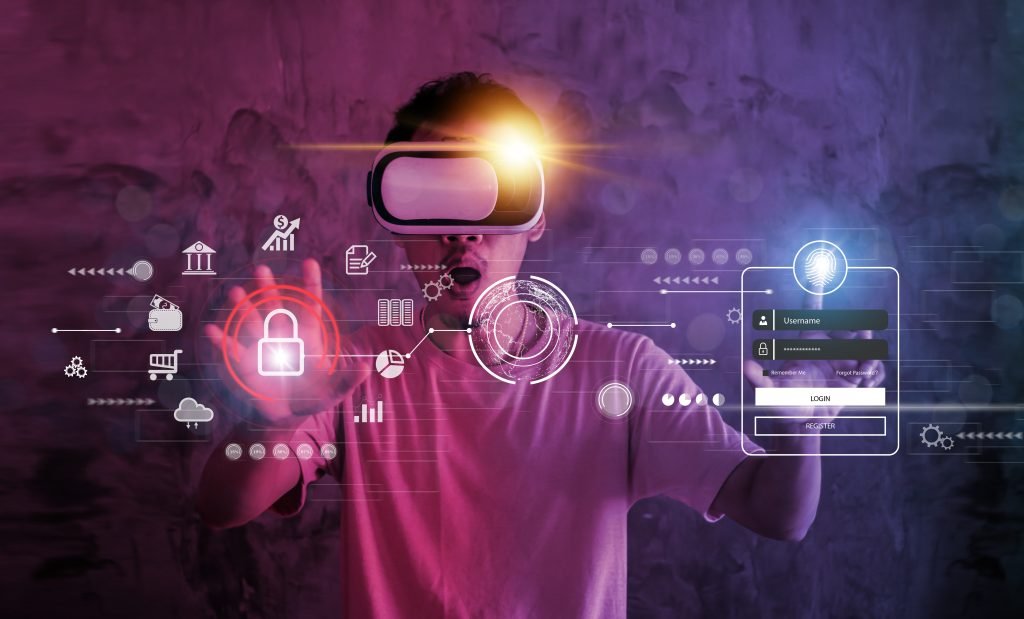
Technologies for augmented reality and virtual reality either enhance or substitute a simulated environment for a real one. Although both augmented reality and virtual reality are intended to provide the user with a simulated environment, each concept is distinct and has different application scenarios. Because it can generate informational overlays that add useful, real-world scenarios, augmented reality is increasingly being used by businesses as well as entertainment scenarios. So, the top 10 engineering colleges in Coimbatore ensure their students learning concepts which are designed to implement for their future operations. Let’s discuss how both concepts and opportunities prevail in engineering and the scope for engineers.
How AR works in Engineering?
Engineers and designers now have the opportunity to inspect and refine these models and designs in a real-world setting by incorporating augmented reality solutions into their designs.
Engineers can create 2D conceptual designs and 3D models of the products they are developing for real-world applications using computer-aided design (CAD).
Throughout the entire process of product design and development, CAD aids engineers in developing, modifying, and optimizing conceptual designs and manufacturing procedures.
The engineering leader for Industry 4.0 will have a basic understanding of augmented reality and computer-aided design (CAD) and be able to ascertain how these technologies can enhance the performance and business prospects of new processes and products.
There are numerous advantages to incorporating augmented reality into engineering education and training. AR makes it possible to incorporate visual, auditory, and hands-on components into the training process, which can be beneficial for trainees with varying learning styles.
It provides a virtual hands-on experience, and augmented reality (AR) can make the training process safer.
During augmented reality-enabled practice, trainees are notified of missteps and potential dangers, assisting them in avoiding these dangers in real-world applications.
AR solutions aid in enhancing manufacturing environment safety. Augmented reality can find potentially hazardous situations that need to be fixed by simulating production processes.
Engineers can use planning AR to implement production, development, and planning workflows that are more effective.
By visualizing their system or equipment in the environment where it will be used, the client and engineer can determine how a conceptualized system or piece of equipment fits within the space and what modifications may be required prior to installation.
By allowing engineers to visualize their conceptual models, step-by-step build instructions, required tools, component connections, and additional resources they may require as they build in a real-world environment, prototypes and marketing augmented reality can streamline engineers’ experiences creating prototypes.
By allowing customers to see the prototype in their own environments and to compare and contrast various specifications and configurations to determine which version would best satisfy their requirements.
Benefits of Virtual Reality in Engineering
Virtual reality has a big impact on business, and technology can be very helpful for both upper management and regular professionals.
- Security for employees: Work-related injuries are no longer a problem. Remote work and virtual reality training are great ways to keep specialists productive and safe.
- Cost-effectiveness: Prototypes and virtual 3D hardware cut down on materials and development costs. Additionally, the majority of the time, virtual staff training eliminates the need to employ a real instructor.
- Optimization of the workflow: You can collaborate with coworkers and hold meetings at any time, no matter where they are.
- Increased capabilities: Specialists can work remotely from home or with a variety of virtual tools.
- Boosting efficiency: Training that is more safe, immersive, and interactive is essential to any specialist’s productive work. Additionally, the ability to utilize any resources at any time cuts down on task completion time.
So, when you choose your major in networking or information technolog, you need to understand these mixed reality concepts and its features in computer engineering course from the best engineering college in Coimbatore. However, let’s discuss the scope for learning these concepts.
What is the scope of VR and AR for Engineers?
- Computer Vision: To track and comprehend the user’s environment, augmented reality and virtual reality heavily rely on computer vision technologies. Engineers with skill in PC vision can add to the advancement of calculations and methods for object acknowledgment, following, and scene reproduction.
- Rendering and graphics: The visual quality and performance of AR and VR experiences can both be improved by engineers with computer graphics expertise. To create immersive and realistic virtual worlds, they might develop optimization strategies, lighting methods, and rendering algorithms.
- Design for the User Interface and Experience: Engineers can concentrate on creating AR and VR applications’ user-friendly and intuitive interfaces. They can help improve the usability and accessibility of AR and VR technologies by contributing to the research on user experience, voice interfaces, and gesture recognition systems.
- Training and simulations: Simulation and training applications like flight simulators, medical training, and industrial safety make extensive use of augmented reality and virtual reality. These training environments can be created by engineers by incorporating interactive scenarios, feedback systems, and realistic physics.
- Entertainment and video games: AR and VR technologies are being adopted by the entertainment and gaming industries. Engineers can help develop games by designing immersive worlds, and interactive mechanics, and enhancing performance for augmented reality and virtual reality gaming experiences.
Every sector like manufacturing, architecture, healthcare, education, and other sectors utilizes augmented reality and virtual reality. Engineers from the top engineering colleges in Coimbatore need to work on AR and VR solutions for remote collaboration, virtual prototyping, industrial training, and product visualization.
